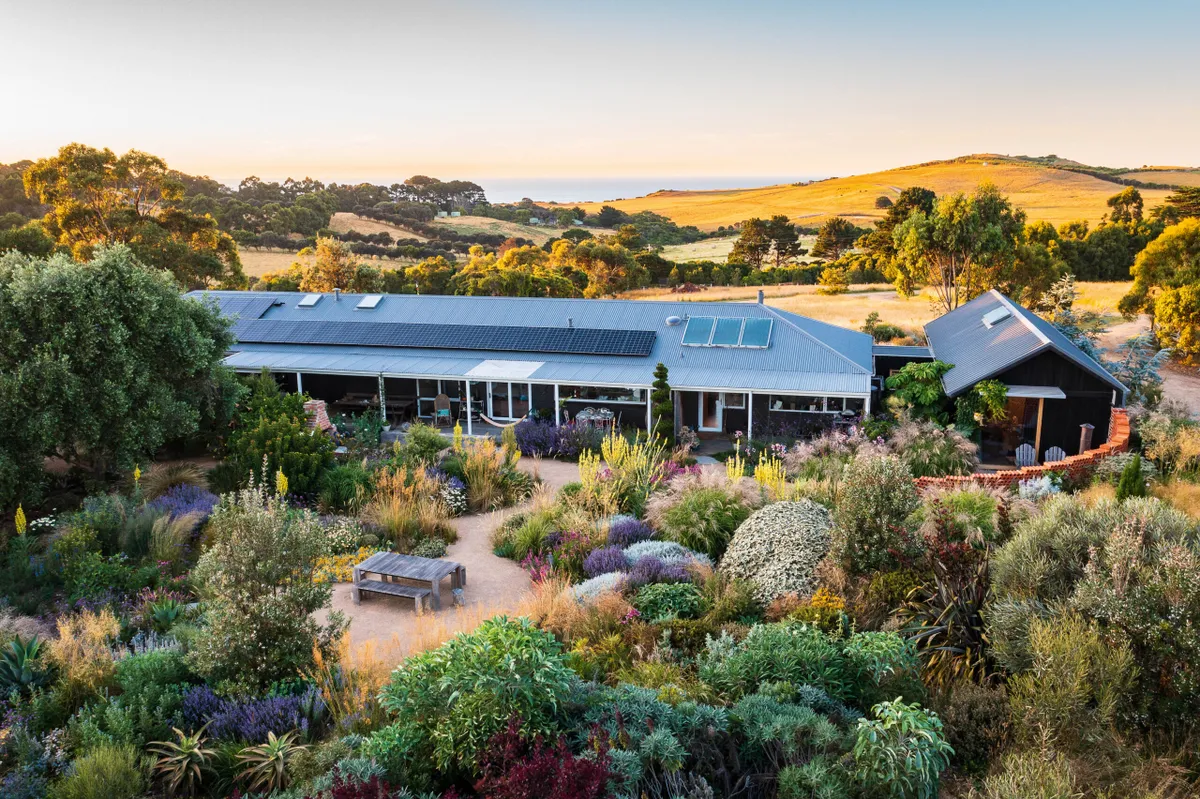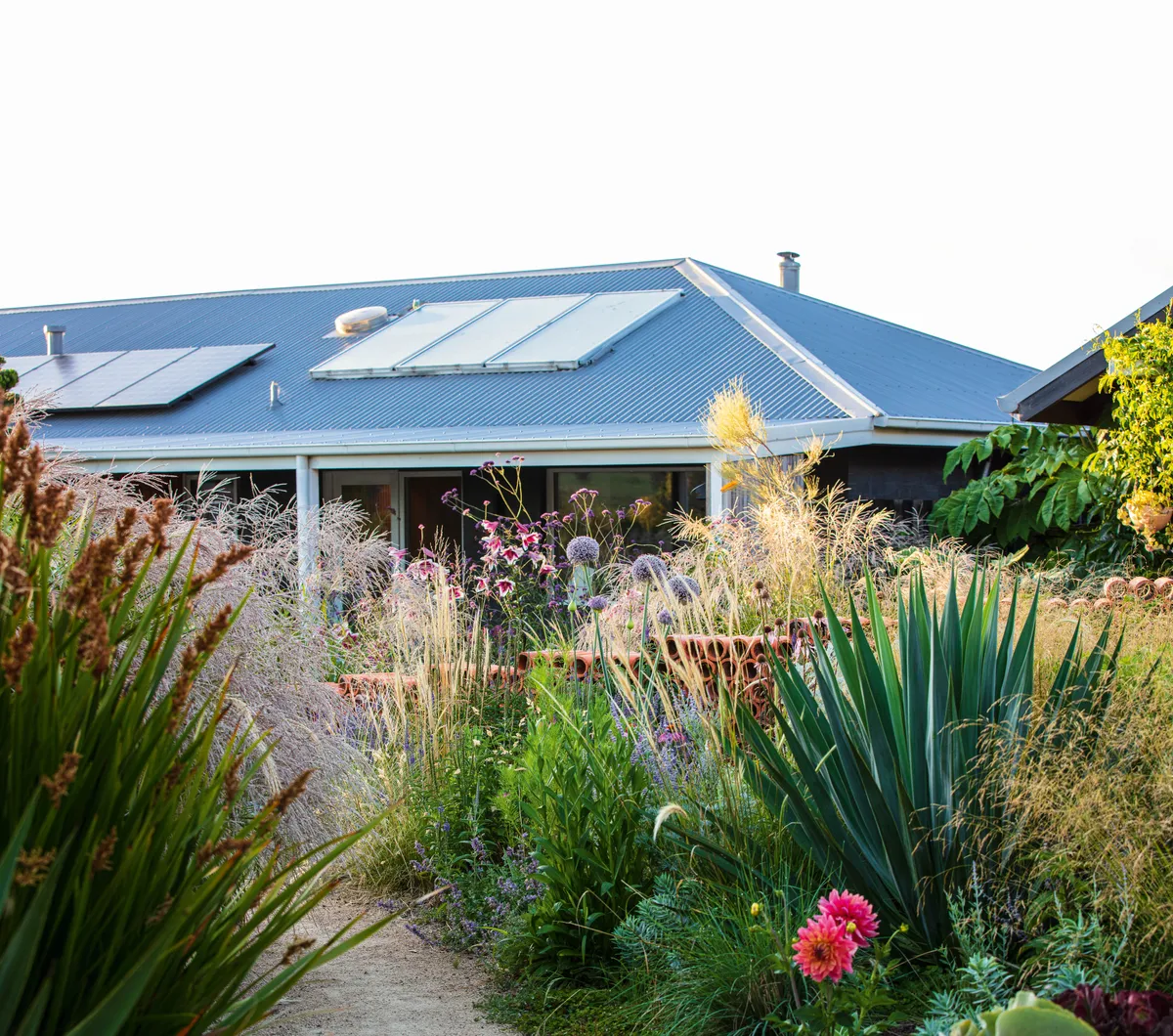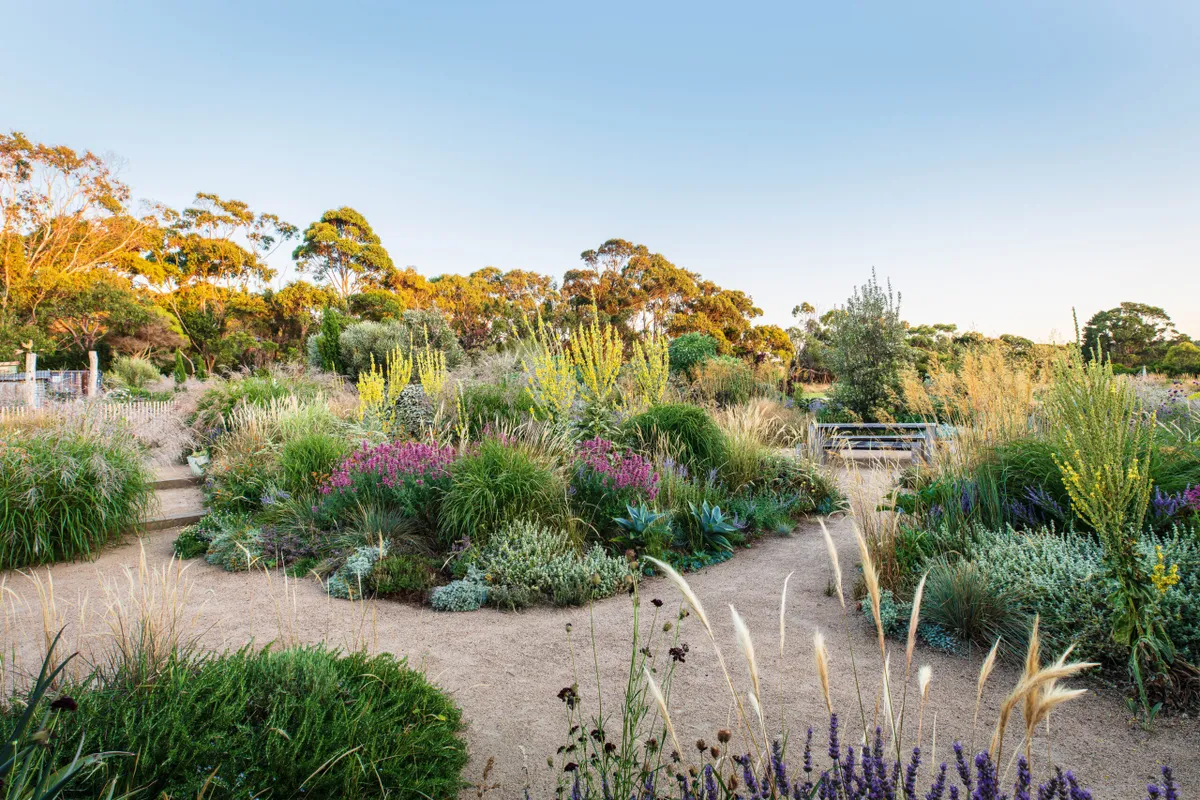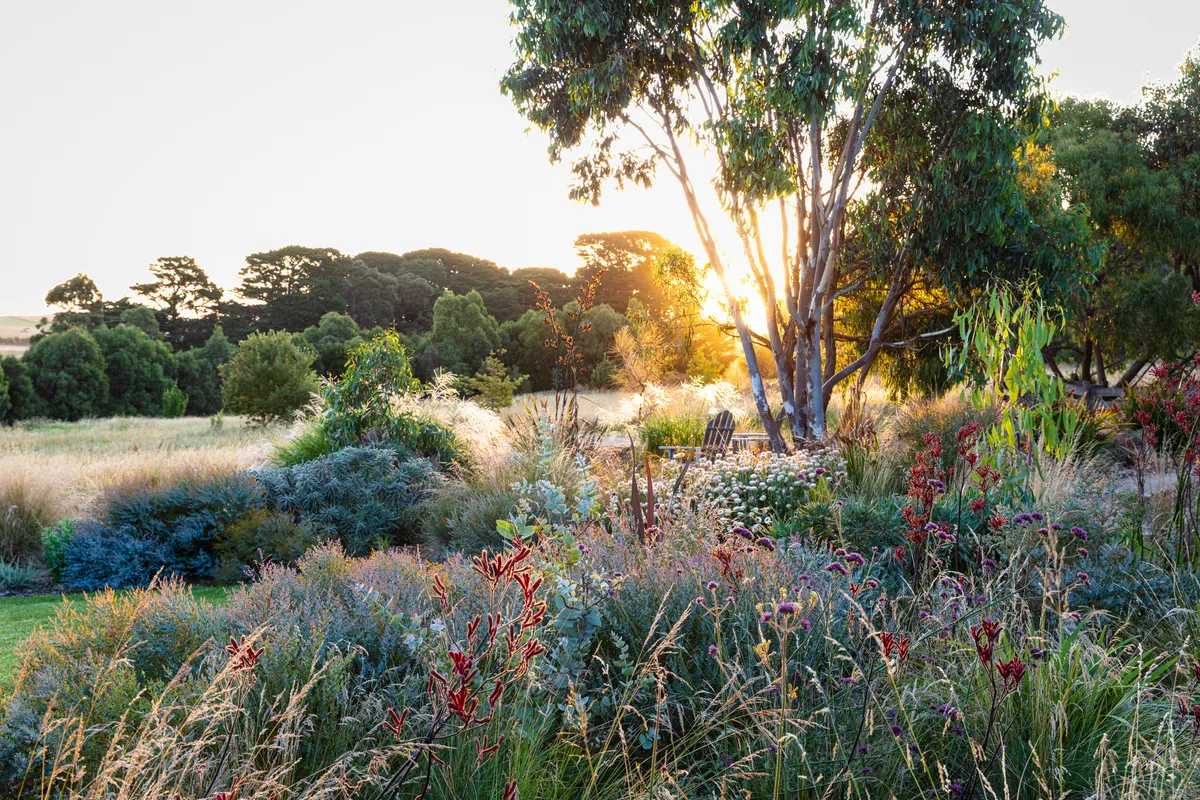Rarely are all four members of one family horticulturists, like garden designer Jo Ferguson, her husband Simon Hazel and their two sons Rupert and Tucker. Their home garden at Flinders, on the Mornington Peninsula southeast of Melbourne, Australia, is a shared labour of love.
Situated on an 18-acre property rolling gently towards the Southern Ocean, work on the garden began in 2016 when Jo and husband Simon reunited after some years apart. When they first bought the property, the garden consisted of a lawn, an olive tree and a few scattered shrubs. They initially discussed knocking down the 1970s brick-veneer house and starting again, but instead, they engaged an architect to undertake alterations and additions, and began engulfing the structure with garden. Jo drew lines on the ground, defining pathways and structure, and Simon jumped on his digger and sculpted the land in a day. While the form of the space came together quickly, the meaning of the garden has been shaped over decades.

Jo’s interest as a garden designer lies in creating healing spaces that nurture both people and places. When designing her home garden, she asked herself and her husband questions such as: “Where did you feel most joy when you were a child? Where did you go when you were sad?” Simon found respite in vegetable gardens, bees and flowers as a young child at boarding school. For Jo, happiness was walking barefoot, having spent her childhood summers “running wild on the foreshore” at a nearby beach. She’s also always been drawn to grasslands, this connection forming during a family trip to central Australia, spending time with Indigenous people living on their homelands. “Being immersed in grasses takes you to a place where you become nearly invisible,” she says. “You disappear, feeling at one with everything.”

Gardening is something the family has always shared and this garden began as a place of hope and healing. It also began by looking out of the kitchen window. “I wanted to look out and see beauty, movement and colour,” explains Jo. On the northern side of the house, the planting pushes right up to the verandah. With moist, volcanic soil, and sheltered by the house from strong southerly winds, the planting is extensive and abundant, comprising an eclectic mix of endemic grasses, flowering perennials, native shrubs and succulents. Granitic sand pathways wind through the space, leading to
a series of pockets amid the planting; a pizza oven in one, a dining table in another. Granite pavers step down to a sheltered seating area beneath the existing olive tree, augmented by a pair of 80-year-old trees salvaged from an olive grove slated for destruction in northwestern Victoria.

The garden playfully combines grasses, perennials and shrubs, often in unusual combinations. Jo credits Five Seasons, a documentrary film on the work of Dutch plantsman Piet Oudolf, and the Covid lockdowns for her experimentation. "It was like being given permission to try all the ideas I've ever had," she say.
The southern side of the house is exposed to very strong winds sweeping up from the Southern Ocean, a few kilometres away. “It was hard to get things to grow here,” Jo says, “until my son Tucker really started to get interested in gardening and began bringing in good soil and mulch.” Thanks to Tucker’s influence (and love of Japanese plants and culture), the planting is an eclectic mix of bonsai, dwarf conifers, sturdy Australian native plants such as tall kangaroo paw (Anigozanthos flavidus) and tussock grass (Poa labillardierei), contrasting with the bold, blue foliage of Eucalyptus latens ‘Blue Lagoon’. Other son Rupert’s influence can be felt in the paddocks surrounding the garden – he’s growing an arboretum showcasing ancient southern-hemisphere tree species including Araucaria, Podocarpus and Agathis.

Jo has said that her garden is a “dreamy, whimsical fantasy grassland”, but it’s more than that. It’s home. Not just for Jo and her immediate human family, but for the many other beings who live among the native and exotic grasses, who visit for sweet nectar in summer, or shelter on branch and stem. “We know when we see pardalotes, fantails and scrubwrens moving among the foliage that we’ve succeeded,” Jo says.
Find out more about Jo Ferguson’s design work at her www.jofergusonlandscapedesign.com
